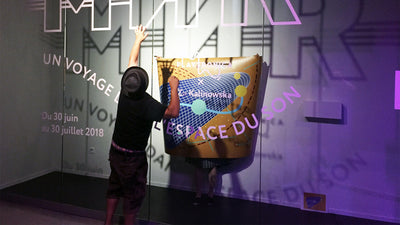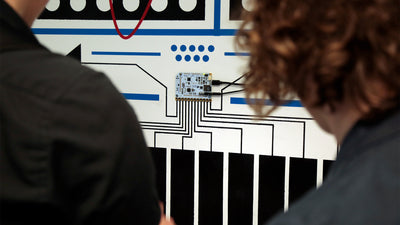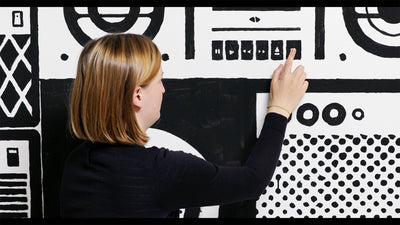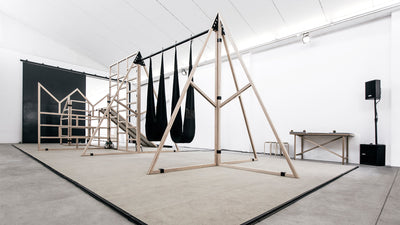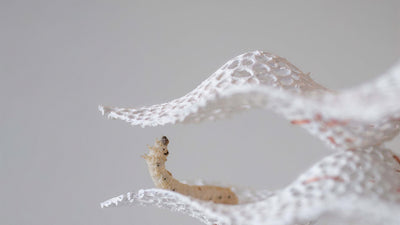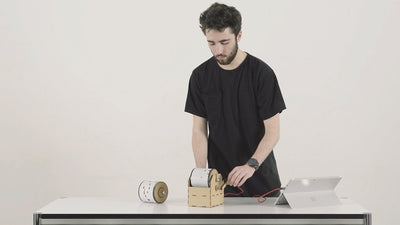Sontobo - An Interactive Wooden Interface

We're always impressed when we find projects that use our technology to solve problems that aim to enable people to improve their lives.
This time we caught up with Timo Hoogland, a Music Technologist to find out more about his project Sontobo, the interactive wooden interface that triggers sound. Timo developed Sontobo for Bartiméus, an organisation that helps visually impaired people have a normal life.
Let's find out more from Timo in his own words:
Hi, Timo! We recently came across your website and very interesting music project. Can you tell us a bit more about your background?
I am currently in my last year of Music Technology Studies at the University of Arts (hku.nl) in Utrecht. During my studies, I learned a lot about programming software for musical purposes like interactive installations and games. In my third year, I started an internship at the Accessibility. Accessibility is a company that checks websites, applications and devices for their accessibility when used by blind or visually impaired people. They also do a lot of interesting side projects for visually impaired children.
At the moment I work for Bartiméus, one of the biggest organisations in the Netherlands for the visually impaired people. Accessibility and Bartiméus work closely on many projects.
Your recent project, 'Sontobo' is an interactive interface built for visually impaired children to play with. What led you to the idea?
It came from the technical director Eric Velleman at Accessibility. The complete project started with a very big interactive wall for visually impaired children to play with. This wall has capacitive sensors hidden inside. When touching the different sensors the children can hear various animal sounds in different environments (mountains, forest, farm, beach, etc.). Because the wall is fixed to one place, we wanted to have some smaller versions (Sontobos) that can be hung on the wall as a painting or taken elsewhere. This is when the Bare Conductive Touch Boards came in handy.
When you decided to build this project, did you have any specific idea in mind that you wanted to accomplish?
The idea of the Sontobo is that children with visual impairment can play music together without having to know a lot about it. Some of the boards have samples of acoustic instruments like piano and drums, while other boards have electronic music sounds and various funny sounds like the sound of the shutter from a camera and the sound of a popping balloon.
Which was the most challenging part of this project?
The most challenging part was building a design that has Electric Paint on top of the wooden plate but connected to the Touch Boards (and all the other electronics) on the back of the plate. I had to find a way to get the Electric Paint through the wood in an easy way. We eventually used copper wires to poke through the wood and connect the paint to the cable.
To create Sontobo, you used our technology. Could you share more details about which tools you used and why, and how you made it interactive?
We used the Touch Board and Electric Paint. The rest of the electronics consist of a small speaker, a mini amplifier for the speaker, some shielded copper cables and long USB-cables. A friend of mine (who is a woodworker) built the wooden frames for the boards and I designed the shapes in Tinkercad. We then laser cut the shapes into white coated MDF plates.
Did you encounter any difficulties while using the Touch Board and Electric Paint?
No, not really. They are really easy to use and that's why they are so great! The only difficulty is when using different shapes and complicated designs you need to make sure that the thresholds for touch and release are set up correctly in the Arduino-sketch code. I used Max/MSP to read the serial data from the Touch Board. That allowed me to decide what the best thresholds settings were for every electrode on the Touch Board. [For another tool that can help you set touch thresholds, check out our Touch Board + Grapher tutorial!]
You used sound as the medium. How did the children react?
The children really liked it. First, they tried out all the different sounds and then, after a while they discovered their favourite sound and kept playing that one :) The best part is the first interaction with the board, when the children haven’t heard any sounds yet, and they still get surprised by the sound when they touch the paint.
Do you and Bartiméus have any future plans of creating more projects like Sontobo?
We are probably going to build more of the sonic touch boards in the near future to be used in different locations (like schools and other facilities of Bartiméus). Other plans are not yet confirmed.
What do you find most interesting about mixing music with new technologies?
The best thing about mixing music with technology is to give the user a new form of experiencing sound. Most people experience sound via listening to artists or bands on streaming services or through computer games. But I like to give people the impression they can play an instrument (solo or together) and compose their own piece of music without knowledge of musical theory or the skill to play an actual instrument.
After using the Touch Board and Electric Paint, are you planning to use them again in any of your upcoming projects?
Yes, I am definitely considering using the Touch Board and Electric Paint in my future projects. I think they are especially great for making a rapid prototype for an interactive installation.
Finally, what did you feel like when you were watching the children interacting with Sontobo?
I felt amazing and I really liked the fact that the children really enjoyed playing and exploring these sounds and installations I created. I felt proud!
Well done Timo, it's an awesome project! Thank you for sharing it with us!
We love it when you share your projects! Post your project on Instagram, YouTube, or Twitter, and make sure to tag @bareconductive or use #bareconductive. You can also send your videos and photos to info@bareconductive.com so we can post them on our site for the world to see.


